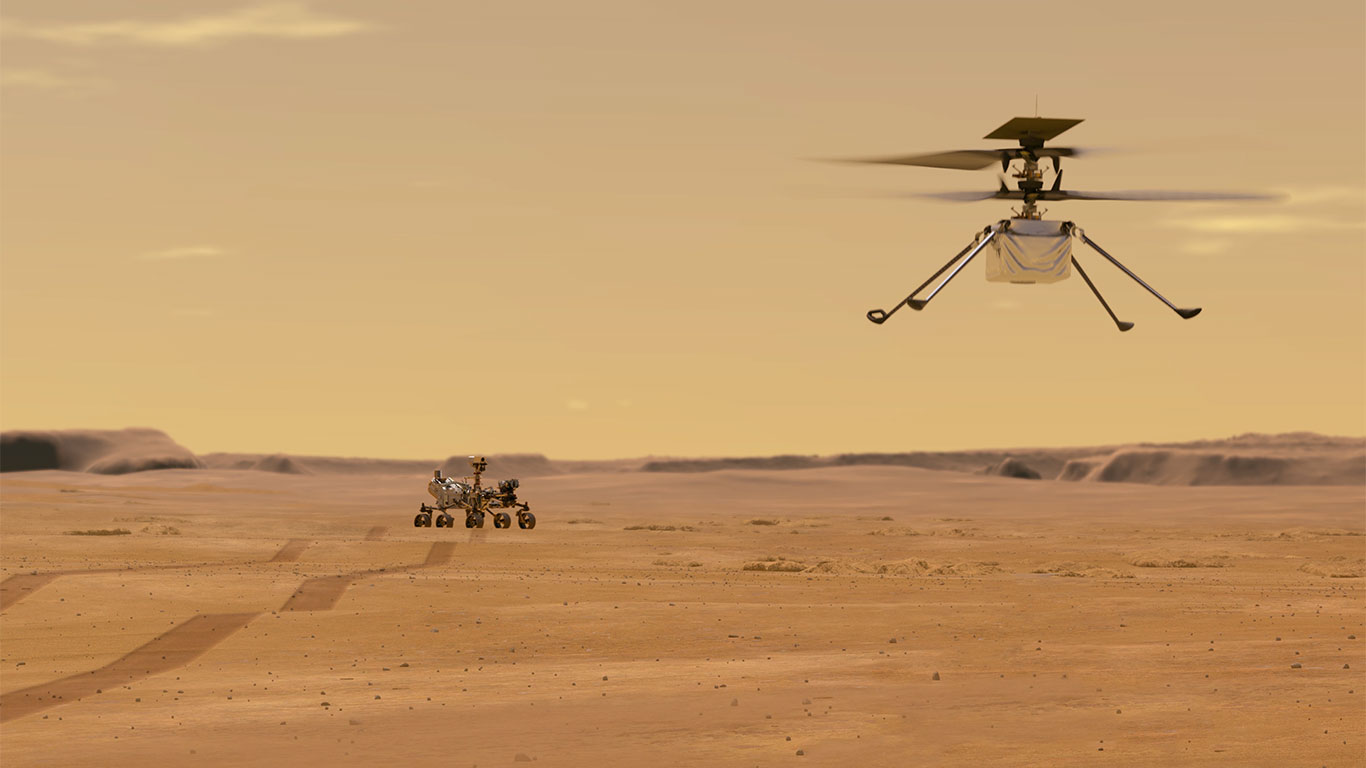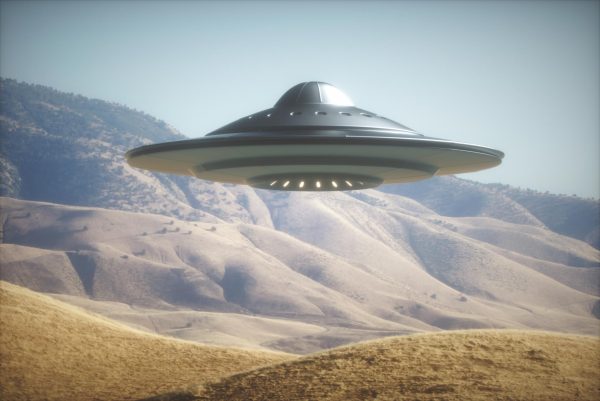One Giant Flight For Mankind
May 4, 2021
Over the past few months, NASA has been preparing for something new, something big. Back on July 30th, 2020, NASA launched their Perseverance rover to Mars, with it finally landing in early February 2021, on the 18th. This rover has a trick up its sleeve, however. Attached to the bottom of the rover is a helicopter, entitled the Ingenuity. With the Ingenuity, NASA aims to make the first powered and controlled flight on another planet as the craft has 30 sols (Martian days) to make a complete test flight.
NASA aims to gather data on the surface of the planet as well as the possibility of flight for the purpose of engineering new exploration methods. Doing so is no easy task, as Mars’ gravity is only about one-third of Earth’s, with an atmosphere about 1% as dense. The Ingenuity is solar-powered, but it will have to store enough energy during the  daytime to keep itself warm enough to survive the sub-zero nighttime temperatures without sustaining damage to any delicate electronics.
daytime to keep itself warm enough to survive the sub-zero nighttime temperatures without sustaining damage to any delicate electronics.
Ingenuity is meant to take off as early as April 8th, in what NASA describes as a moment akin to the first flight by mankind on earth, conducted by the Wright brothers. In the spirit of honoring that legacy, NASA has included a small portion of the fabric from their plane within the Ingenuity. There is a very long preparation process for this moment, with the Perseverance rover exposing the Ingenuity as it approaches the launch site.
The goal may be a completed test flight, but NASA says they have to perform a series of diagnostic flights to test the basic capabilities of the craft. By the end of the summer, after the Ingenuity tests complete, the Perseverance will continue its own mission to collect samples of material to be collected by a future mission, with the aim of examining the material to search for signs of ancient microbial life, including signs of water.
In the meantime, Perseverance is providing pictures and recordings of the Martian terrain, as well as the preparation of the Ingenuity. With the equipment on the Perseverance, NASA has already recorded the sounds of the rover traversing the Martian terrain, as well as the sounds of the Martian winds. They have also recorded the sounds of its various tools testing the rocks, with plans for more interesting audio recordings to come soon.
With the prospect of flight to explore Mars drawing closer and closer, we learn more about our neighboring planet constantly. Hopefully, NASA can make full use of the data they collect here about flight on Mars to send more craft that can gather more data and examine the surface of the Red Planet at higher speeds than rovers can.













